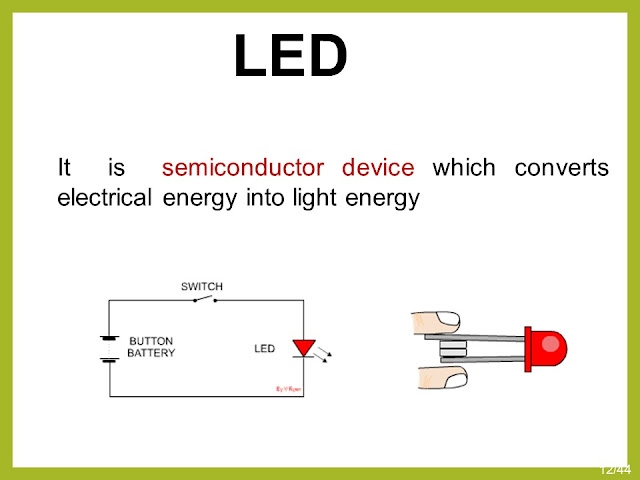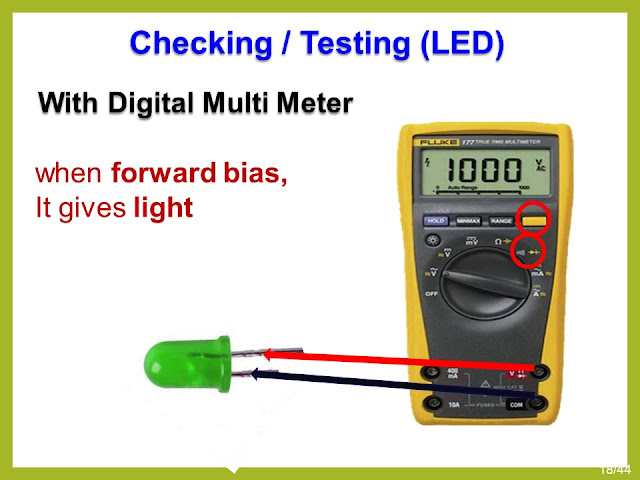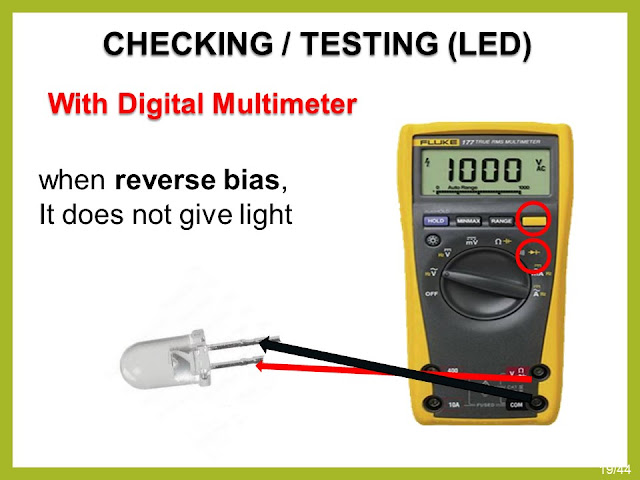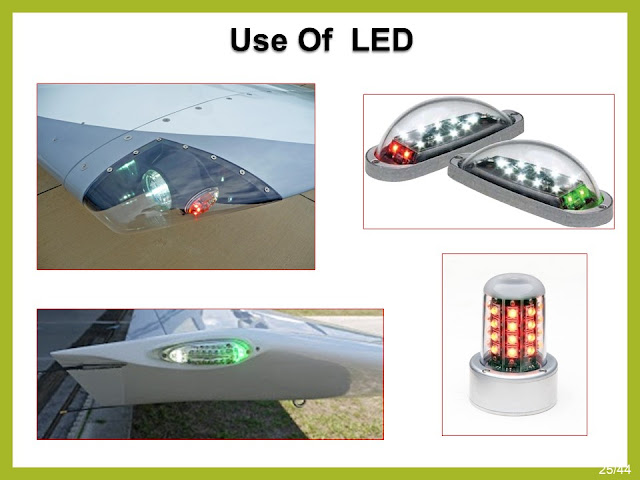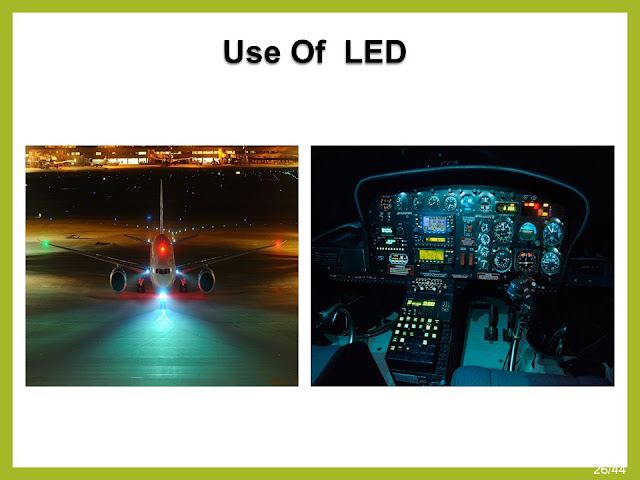1. Basics of Electronics
- Electronics
deals with the flow of electrons in vacuum, gas, or semiconductor.
- Current
flow in electronics is controlled using components.
- Electric
current is the movement of free electrons in a circuit.
- Voltage is
the potential difference that drives current.
- Resistance
limits the amount of current in a circuit.
- Conductors
allow easy flow of electrons.
- Insulators
resist the flow of electrons.
- Semiconductors
have conductivity between conductors and insulators.
- Silicon
and germanium are common semiconductor materials.
- Doping
adds impurities to semiconductor to change its properties.
2. Types of Current
- Direct
current (DC) flows in one direction only.
- Alternating
current (AC) changes direction periodically.
- DC voltage
is constant over time.
- AC voltage
varies sinusoidally with time.
- Frequency
is the number of AC cycles per second.
- Frequency
is measured in hertz (Hz).
- Period is
the time taken for one complete AC cycle.
- The RMS
value of AC gives equivalent DC value.
- Peak value
is the maximum value of an AC waveform.
- Average
value of AC equals 0.637 × peak value.
3. Conductors, Resistors, and Materials
- Ohm’s law
states V = I × R.
- Resistance
increases with temperature in most metals.
- Resistivity
depends on material type and temperature.
- Conductivity
is the reciprocal of resistivity.
- Colour
codes identify resistor values.
- Fixed
resistors have constant resistance.
- Variable
resistors allow resistance adjustment.
- Potentiometers
act as voltage dividers.
- Thermistors
change resistance with temperature.
- LDRs
(Light Dependent Resistors) change resistance with light intensity.
4. Capacitors
- Capacitor
stores electrical energy in an electric field.
- Capacitance
is the ability to store charge.
- Unit of
capacitance is the farad (F).
- Capacitance
increases with plate area and decreases with plate distance.
- Dielectric
material increases capacitor’s efficiency.
- Energy
stored in a capacitor = ½ C × V².
- Capacitor
blocks DC and allows AC to pass.
- Electrolytic
capacitors are polarized.
- Ceramic
capacitors are non-polarized.
- Capacitors
are used for filtering, timing, and coupling circuits.
5. Inductors
- Inductor
stores energy in a magnetic field.
- Inductance
opposes change in current flow.
- Unit of
inductance is the henry (H).
- Inductance
increases with more coil turns.
- Inductance
increases with iron or ferrite core.
- Inductive
reactance increases with frequency.
- Formula
for inductive reactance: XL = 2πfL.
- Inductors
are used in filters and tuned circuits.
- Mutual
inductance occurs between two nearby coils.
- Energy
stored in inductor = ½ L × I².
6. AC Circuits
- In
resistive circuit, voltage and current are in phase.
- In
inductive circuit, current lags voltage by 90 degrees.
- In
capacitive circuit, current leads voltage by 90 degrees.
- Impedance
(Z) is total opposition to AC current.
- Impedance
combines resistance and reactance.
- Formula: Z
= √(R² + (XL − XC)²).
- Power
factor = cos φ, where φ is phase angle.
- True power
= V × I × cos φ.
- Apparent
power = V × I.
- Reactive
power = V × I × sin φ.
7. Diodes
- A diode
allows current to flow in one direction only.
- It has an
anode and a cathode terminal.
- P-N
junction forms when p-type and n-type materials join.
- Forward
bias allows current to pass through diode.
- Reverse
bias blocks current flow.
- Silicon
diode forward voltage drop is about 0.7 V.
- Germanium
diode forward voltage drop is about 0.3 V.
- Zener
diode operates in reverse breakdown region for voltage regulation.
- LED emits
light when forward biased.
- Photodiode
generates current when exposed to light.
8. Rectifiers and Power Supplies
- Rectifiers
convert AC voltage into DC voltage.
- Half-wave
rectifier uses one diode.
- Full-wave
rectifier uses two or four diodes.
- Bridge
rectifier uses four diodes in bridge configuration.
- Filter
capacitor smooths pulsating DC output.
- Ripple
voltage is unwanted AC variation in DC output.
- Voltage
regulators maintain constant DC output.
- Linear
regulator dissipates excess voltage as heat.
- Switching
regulator uses high-frequency switching for efficiency.
- Power
supply converts and stabilizes electrical power for circuits.
9. Transistors
- Transistor
is a three-terminal semiconductor device.
- Terminals
are emitter, base, and collector.
- NPN and
PNP are two transistor types.
- Small base
current controls large collector current.
- Transistor
acts as amplifier or switch.
- Current
gain (β) = collector current / base current.
- In common
emitter configuration, output is inverted.
- Biasing
sets correct operating point of transistor.
- Saturation
means transistor fully conducts.
- Cut-off
means transistor completely off.
10. Digital Electronics and Logic Gates
- Digital
signals have two states: ON (1) and OFF (0).
- Analog
signals vary continuously.
- Logic
gates perform basic digital operations.
- AND gate
output is 1 only if all inputs are 1.
- OR gate
output is 1 if any input is 1.
- NOT gate
output is opposite of input.
- NAND gate
output is opposite of AND output.
- NOR gate
output is opposite of OR output.
- XOR gate
output is 1 when inputs are different.
- Digital
electronics form the basis of computer and avionics systems.








